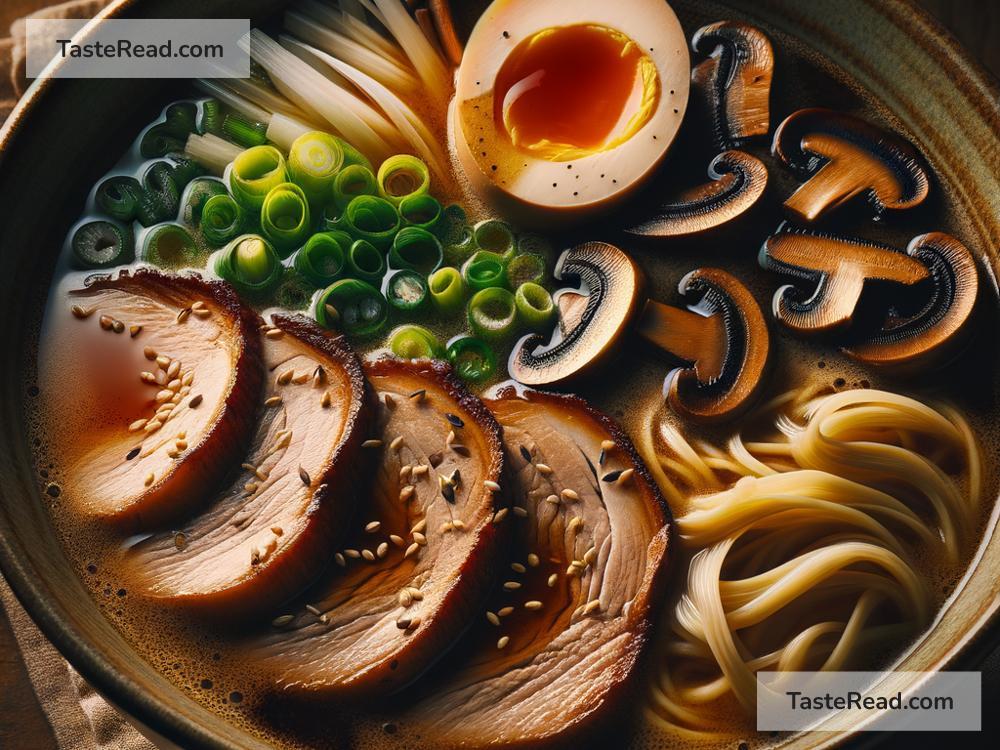The Science of Umami: The Fifth Taste
Have you ever taken a bite of something and thought, “Wow, this is so savory and delicious!”? If you have, chances are, you’ve tasted umami. Umami is often called the “fifth taste,” joining sweet, salty, sour, and bitter as one of the basic tastes we can sense with our tongues. But what makes umami so special? And why do we enjoy it so much? Let’s dive into the science behind umami and learn more about its fascinating history and importance in food.
What Is Umami?
Umami is a Japanese word that translates to “pleasant savory taste.” The term was first introduced in the early 1900s by a scientist named Kikunae Ikeda in Japan. While studying flavors, he noticed that certain foods didn’t fit perfectly into the traditional categories of sweet, salty, sour, or bitter. For example, he observed that broth made from kombu (a type of seaweed) had a unique taste—savory, rich, and satisfying—which couldn’t be explained by the four basic tastes.
After conducting experiments, Ikeda discovered that the key to this flavor was a chemical compound called glutamate. Glutamate is a type of amino acid, which is a building block of protein found naturally in foods like meat, cheese, mushrooms, tomatoes, and seaweed. When glutamate interacts with taste receptors on the tongue, it gives us that deep, savory sensation we now call umami.
How Do We Taste Umami?
Just like we have taste buds that detect sweetness or bitterness, our tongues also have special receptors that sense umami. These receptors are designed to recognize glutamate and similar compounds, like inosinate (found in meats) or guanylate (found in mushrooms). When these molecules hit our taste buds, they activate the umami sensation, signaling to our brain that we’re eating something rich and nourishing.
Interestingly, umami often works alongside other flavors to create a balanced, delicious taste experience. For example, think about a warm bowl of chicken soup. The saltiness, combined with the umami from the chicken and broth, makes the soup feel comforting and satisfying.
Foods That Are Naturally High in Umami
You might be surprised to discover how many foods owe their deliciousness to umami. Some common umami-rich foods include:
-
Meat and Poultry: Beef, pork, chicken, and other meats are full of umami, especially when cooked. Grilling, roasting, or braising meat enhances its flavor, making it even more appealing.
-
Seafood: Fish, shellfish, and seaweed are great sources of umami. In Japanese cuisine, kombu seaweed is famously used to make dashi, a savory stock with a strong umami flavor.
-
Cheese: Parmesan, cheddar, and other aged cheeses have concentrated umami flavors due to the fermentation process.
-
Mushrooms: Shiitake, porcini, and other mushrooms are packed with umami, especially when they’re dried or cooked.
-
Tomatoes: Tomatoes, particularly when they’re sun-dried or cooked into a sauce, are a fantastic source of umami.
-
Fermented Foods: Soy sauce, miso, fish sauce, and other fermented condiments are brimming with umami, making them essential in many world cuisines.
The Role of Umami in Cooking
Why do chefs love umami so much? The answer is simple—umami makes food taste better! When you add umami-rich ingredients to a dish, they deepen the flavor and make it more satisfying. For example, adding parmesan cheese to pasta or soy sauce to stir-fried veggies enhances the overall taste.
Another interesting thing about umami is its ability to balance flavors. Sweetness, saltiness, and sourness can sometimes overpower a dish, but umami brings everything together. It’s like the glue that holds the flavors in harmony.
The Science Behind Why We Love Umami
Humans are naturally drawn to umami-rich foods, and science can explain why. Because glutamate is found in proteins, our brain associates umami with foods that are nutritious and necessary for survival. Essentially, when we eat umami-heavy food, our body says, “This is good for you!” That’s why umami makes meals feel so comforting and indulgent.
Research also suggests that umami-rich foods may help us feel fuller and more satisfied after a meal. This is because umami activates certain mechanisms in the gut and brain that signal satiety, meaning we don’t feel the need to overeat.
Umami Around the World
Umami isn’t just a Japanese discovery—it plays a central role in cuisines around the world. Here are a few examples:
-
Italian Cuisine: Think about a heaping bowl of spaghetti with tomato sauce and parmesan cheese. It’s bursting with umami from both the tomatoes and the cheese.
-
Chinese Cuisine: Soy sauce, oyster sauce, and fermented tofu are loaded with umami, which is why they’re key ingredients in Chinese cooking.
-
Mexican Cuisine: Mole sauces, made with rich ingredients like tomatoes, chilies, and chocolate, have a distinct umami flavor.
-
American Cuisine: Barbecued meats, hamburgers, and even ketchup owe their appeal to umami.
The Future of Umami
Umami has come a long way since Kikunae Ikeda first discovered it. Today, food scientists continue to explore the power of umami and its applications in health, cooking, and even food production. For example, some researchers are finding ways to use umami to create healthier, low-sodium processed foods. Since umami enhances flavor, it can reduce the need for excessive salt.
Conclusion
Umami is more than just a taste—it’s a way to make food more enjoyable and satisfying. Whether it’s a bite of aged cheese, a spoonful of mushroom soup, or a slice of pizza, umami is the flavor that brings everything together. Now that you know the science behind umami, you can appreciate its role in making meals delicious and memorable. So the next time you savor a dish, take a moment to thank umami for its magic!


